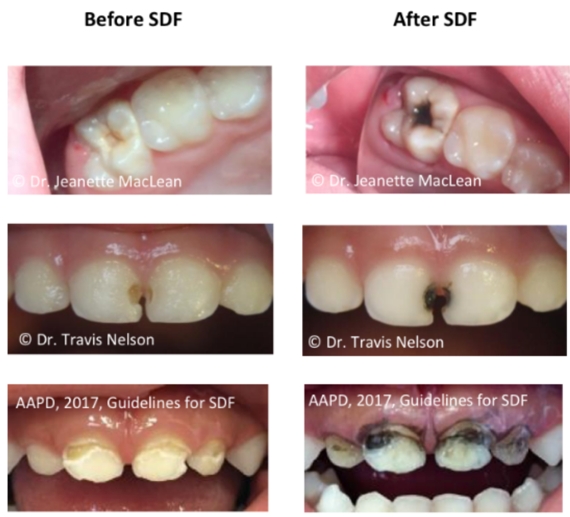Treatment of decayed teeth using Silver Diamine Fluoride (SDF)
Silver diamine fluoride (SDF) is an antimicrobial liquid that is painted onto decayed baby teeth to treat the decay. It is composed of two primary components: silver and fluoride.
Silver acts as an anti-microbial that can inhibit the decay causing bacteria and possibly halt the progress of the decay.
Fluoride is the active ingredient and it strengthens enamel which can prevent additional decay from occurring.
SDF works by allowing the soft decayed part of the tooth to harden. It can help to keep the decayed teeth stable until the tooth falls out, if it is a baby tooth or your child is able to manage to have a filling.
Pros
Cons

Other things to be aware of
From a safety point of view SDF has great appeal. It allows treated teeth to stay in place for longer thus keeping space for the adult teeth to erupt into the correct position.
Treated teeth usually no longer cause the pain or sensitivity that you would normally associate with a hole in a tooth.
Depending on the location and how advanced the decay is, other options for treatment are to apply fluoride varnish, do a filling or crown or of course do nothing and monitor the tooth at each visit.
SDF does not guarantee the decay will not progress and reapplication or perhaps other treatments such as placing a filling may still be necessary.